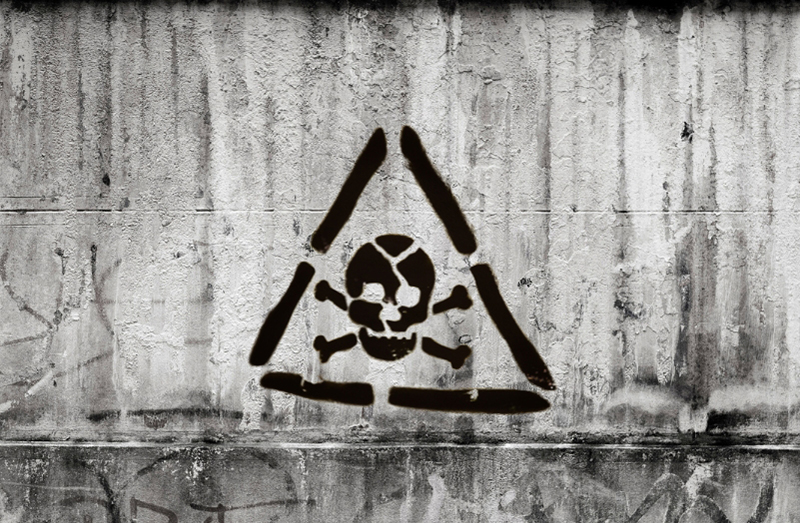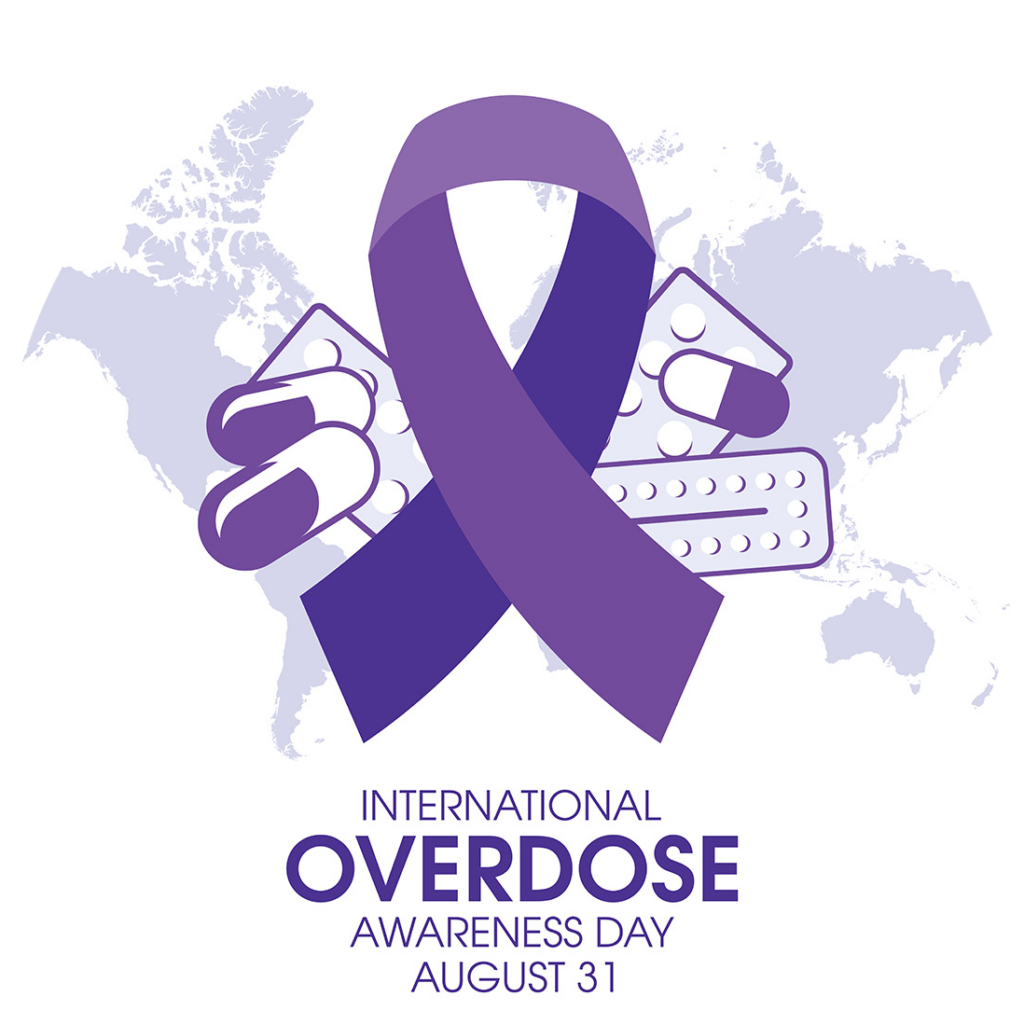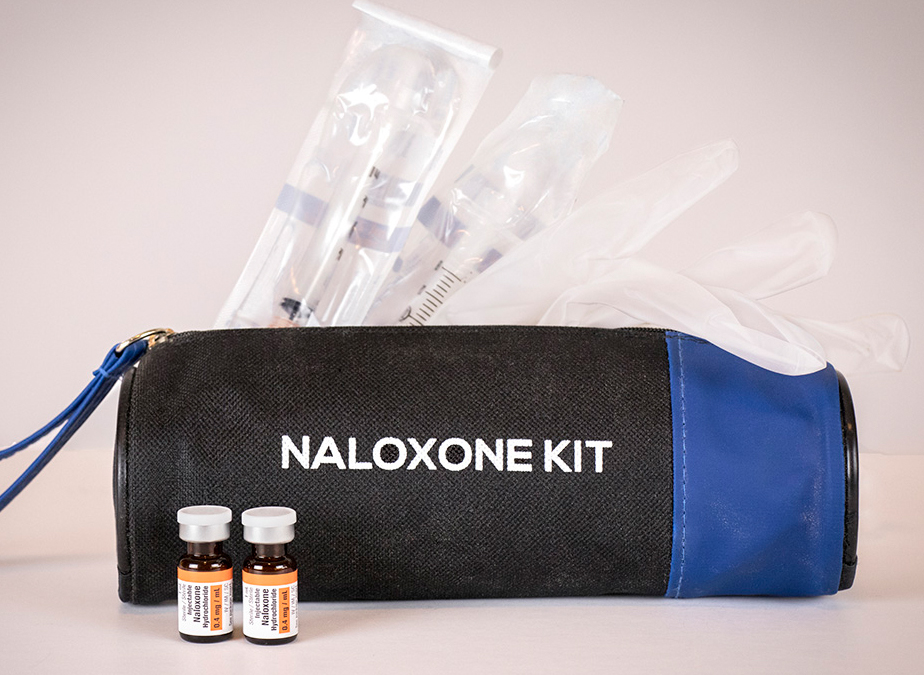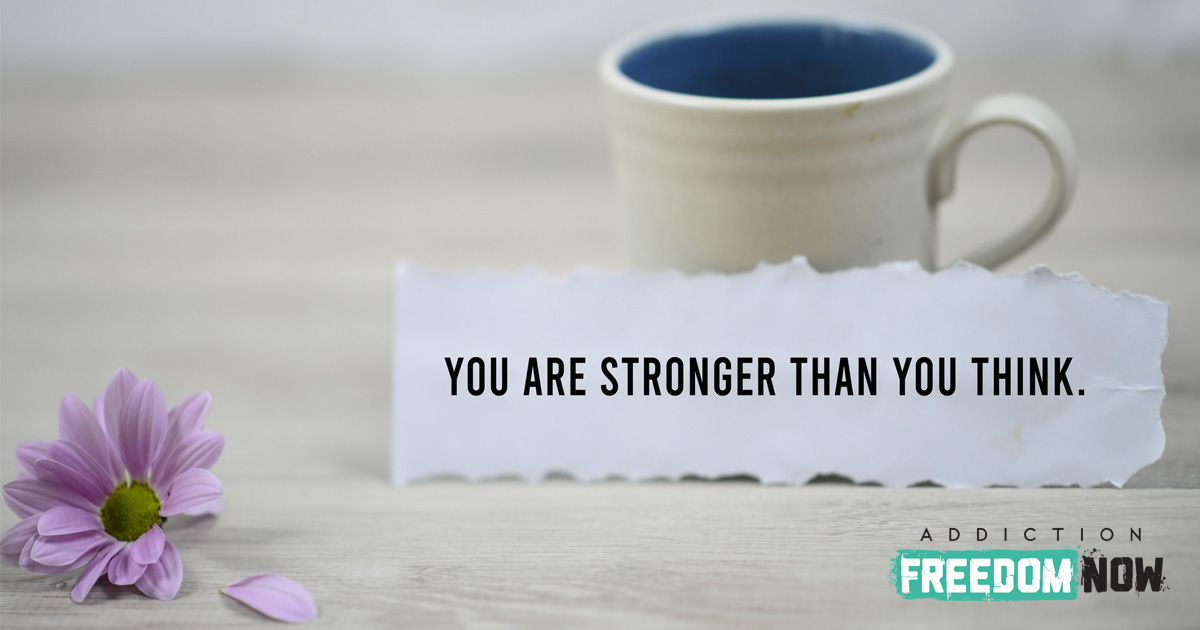
Overdose Crisis
Substance use disorder, or SUD, can affect individuals and their loved ones in many ways. The physical and mental health impacts are often severe, especially as the disorder progresses. Relationships, too, can suffer as people encounter difficulties spurred by substance use. Arguably, the most severe impact experienced by people with SUD is that of overdose.
The overdose crisis, as it has been termed by many, is a US and even worldwide emergency that becomes more elevated each year. Overdose can and often does lead to death, claiming nearly 300 Americans each day in 2022. To stem this crisis, we must all work together to build education, eliminate roadblocks, reduce stigma, and share resources.

This collection of resources can help you or your loved one learn more about overdose so you can help us prevent overdose deaths and improve your life.

Overdose Basics
When a person takes more of a particular substance – or combination of substances – than their body is able to handle, an overdose ensues. An overdose can cause everything from concerning side effects like extreme nausea, vomiting, and unconsciousness to serious, potentially fatal problems like respiratory issues, cardiac arrest, and seizures. While toxic levels of a substance in the body do not always lead to death, overdose is frequently deadly.
Types of Overdoses
Overdoses can occur due to consumption of a variety of substances, such as alcohol, illicit or street drugs, and prescription medications.
- Opioid Overdose – Opioid overdoses are the fastest rising and most frequent types of overdose in the US, accounting for approximately ⅓ of all overdose deaths. Opioids can include prescription medications like oxycodone, fentanyl, and morphine, or illicit drugs like heroin. Unconsciousness, blue-tinged skin, pinpoint pupils, and slowed or no breathing are some of the most frequent symptoms of an opioid overdose.
- Stimulant Overdose – Substances like methamphetamine and cocaine are among those that can lead to a stimulant overdose. Agitation, irritation, elevated body temperature, convulsions, and heart attack are among the symptoms of a stimulant overdose.
- Alcohol Overdose – Alcohol overdose, or alcohol poisoning, occurs when the alcohol content in the blood exceeds safe levels. Symptoms include vomiting, convulsions, slow or irregular breathing, and unconsciousness.
- Sedative Overdose – Sedatives and tranquilizers interfere with and depress brain activity, which is why they are referred to as depressants. Drowsiness, disorientation, and respiratory depression are some of the most critical symptoms of a sedative overdose.
Recognizing an Overdose
The sooner you can recognize that an overdose may have occurred, the more likely the person may recover.
While the signs of an overdose can vary depending on the substance involved, as noted above, there are some general signs of overdose to watch for:
- The individual doesn't react to stimuli or wake when prompted.
- The individual has shallow, halting, or slow breathing.
- The individual has blue or gray skin, particularly around the lips and fingertips.
- The individual exhibits gurgling sounds, a sign that an airway is closed.
- The individual appears unconscious or is unable to be roused.

Overdose Prevention
Preventing overdose is an essential task we must work on together. Since overdose is a multifaceted issue, its prevention involves a combination of education, harm reduction strategies, and access to treatment and support resources.

Education and Overdose Awareness
Overdose Awareness Month occurs each August, and is a time devoted to increasing public awareness of the effects that overdoses have on people, families, and communities. Similarly, August 31st, Overdose Awareness Day, is celebrated as the culmination of this month-long awareness effort.
Addiction Freedom Now, along with The Penington Institute, shines a light on this international event to ensure that we not only remember those individuals who have died from overdose but also provide support to bereaved families and disseminate important information about overdose prevention and treatment.
Addiction Freedom Now is pleased to back the Penington Institute and other groups’ initiatives to prevent overdoses and save lives by promoting these strategies:
- Public Education – Educating the general public about the dangers of substance use and the value of professional treatment is key to reducing stigma and eliminating roadblocks to care.
- Monitoring Prescriptions – Efforts are underway to not only reduce the number of opioid prescriptions but also ensure they are taken as prescribed and kept away from vulnerable individuals.
- Safe Disposal – Many states and counties participate in events to encourage the safe disposal of medications in a way that discourages use. National Prescription Drug Takeback Day is just one of these events.
Harm Reduction Strategies
While the only way to completely eliminate the risk of overdose is to cease substance use altogether, we must be realistic. Recovery can be daunting and the millions of people still participating in active substance use deserve reasonable efforts to keep them safe until they can begin a recovery journey.
Harm reduction strategies can reduce the danger for individuals as well as create positive change that can lead to improved outcomes.
- Narcan Distribution – Narcan/naloxone is a drug that can reverse an opioid overdose and save lives. It is essential to make this medication more accessible and to teach people how to use it.
- Supervised Sites – These establishments offer a secure environment for drug use under medical supervision, thereby mitigating the risk of overdose and facilitating access to healthcare services and other resources.
- Syringe Exchange Programs – These initiatives offer resources for safe use while halting the spread of infectious diseases.

Access to Treatment and Support
While treatment can be lifesaving and is a crucial way to reduce overdoses, there are many reasons individuals may not seek treatment. First, we must destigmatize SUD by having honest discussions about the topic. It is essential to not only create resources and distribute information about them but also work to remove roadblocks to treatment.
Creating treatment programs that are flexible, inexpensive, and comprehensive can improve access to important strategies people need to prevent overdose.
- Medication-Assisted Treatment (MAT) – This crucial treatment approach for substance use disorders combines counseling and behavioral therapies with medications such as buprenorphine or methadone. The medications can help to reduce cravings and physical withdrawal symptoms while addressing the underlying causes of SUD.
- Behavioral Therapies and Counseling – SUD is medical in nature. It is crucial to improve access to psychological assistance to treat the underlying problems associated with SUD.
- Support Groups – Improved access to diverse support groups can help people develop the social structures they need to not only cease substance use but return to a healthy, happy life. Narcotics Anonymous (NA) and Alcoholics Anonymous (AA) are two examples of groups that provide peer and community support.
Overdose Statistics
- In the last year, 46.8 million (16.7%) Americans who were 12 years of age and older struggled with a substance use disorder.
- In the previous year, 10.5% of Americans aged 12 and over suffered from an alcohol use disorder.
- In the previous year, around 27.2 million Americans aged 12 or older (9.7%) said they had struggled with a drug use issue.
- Eight million (2.9%) Americans aged 12 and over suffered from alcohol and drug use disorders at the same time that year.
- In the previous year, 21.5 million American people (8.4%) experienced co-occurring disorders, or mental health and drug use disorders.
- That same year, almost 108,000 people died of a drug-related overdose.
- Opioid-related overdoses from any opioid source made up over ⅓ of all overdose-related deaths and nearly quadrupled from 2010 to 2022.
- Prescription opioid deaths rose from just shy of 3,500 in 1999 to nearly 15,000 in 2022.
- Stimulant overdoses more than quadrupled from 2015 to 2022.
SUD and Overdose Facts
For example, risk for SUD may be increased by environmental factors such as:
- Abuse and chaos in the home
- Drug use and attitudes about drugs by parents
- Peer pressure
- Attitudes toward drugs in the community
- Low academic accomplishment
Another crucial risk factor is age and mental health status. Compared to other populations, teenagers and those with mental health conditions are more vulnerable to SUD.

Global Overdose Facts
- Overdose deaths related to the opioid problem have dramatically increased, especially in North America. In recent years, opioids appear to have been tangentially or significantly involved in some 70% of drug overdose deaths in the United States.
- Drug use is implicated in over 600,000 deaths in 2022. Of these deaths, 80% resulted from opioid use, and 25% from opioid overdose.
- Because of its extreme potency and widespread availability on the illegal drug market, the synthetic opioid Fentanyl is a significant contributor to overdose deaths.
- Unfortunately, only half of the countries in the world provide treatment for SUD, and fewer than 10% of people who need it actually receive it.
- The financial toll of the overdose epidemic encompasses medical and funeral bills, missed work, and criminal justice costs. For opioids alone in 2022, this figure surpassed 1 trillion dollars.
Reasons Given for Substance Use and Overdose
So, why do people use substances? Why does overdose occur?
The following reasons are frequently given by people experiencing SUD:
- To Feel Pleasure – Substances have the power to elicit strong pleasure. While opioids like heroin cause relaxation and satisfaction after the initial high, stimulants like cocaine cause euphoria followed by sensations of power and vitality.
- To Feel Better – Drugs and alcohol are often used to self-medicate and reduce symptoms of stress, depression, or social anxiety. In fact, stress is an important contributing element to beginning, sustaining, and resuming substance use for many people.
- To Perform Well – Some people use illicit or prescription stimulants to improve their ability to concentrate, perform well at work or school, or improve their athleticism.
- Peer Pressure – Adolescents are particularly susceptible to peer pressure, which can result in drug experimentation. Because of their developmental stage and the influence of their classmates who use drugs, teens are especially vulnerable.
Overdose Risk Factors
While many people choose to use substances, especially those that are legal, misuse can increase the chances that an overdose will occur. In addition, other risk factors can further increase the chances of overdose. Comprehending these risk factors puts individuals and communities in a strong position to manage or reduce these risks and prevent overdose.
Be aware of these hazards so you can make well-informed decisions to alter or prevent the circumstances that increase the likelihood of an overdose:
- Using multiple substances concurrently or consecutively
- Redosing at a faster rate
- Members of the household are prescribed frequently misused medications like fentanyl or oxycodone
- Addiction or dependence on one or more substances
- Fluctuations in tolerance, such as resuming drug use following a hiatus of at least two or three days
- A compromised immune system or long-term medical issues like obesity and heart disease
- Occasionally or frequently using more of a medication than prescribed, or more often than prescribed
- Substance use while alone or in a strange environment
- One or more prior overdose incidents
The risk of overdose may also be increased by social stigma. For instance, if someone with SUD feels judged, they may attempt to conceal their use or put off getting help or treatment. Using substances alone increases the risk of dying from an overdose.
It is crucial to understand that this is not a complete list and that there are often additional personal and environmental factors that raise the possibility of an overdose.
Get more information on these by getting in touch with local overdose prevention programs and organizations.

Overdose Resources
Access to the proper resources can make a significant impact on people recovering from overdoses, as well as efforts to prevent overdoses.
Here are a few methods for getting in touch with local resources:
- Community Health Centers – Many provide services for harm reduction and some may offer free or low-cost SUD therapy and support groups.
- Local Health Departments – These organizations frequently offer resources and information on preventing overdoses.
- Support Groups – Seek out NA, AA, and other peer support groups in your area.
- Pharmacies – Pharmacies often give advice on how to use naloxone and may distribute it without a prescription.
Addiction Freedom Now is dedicated to making a difference in the battle against overdose and helping individuals impacted by substance use disorders by offering extensive resources and support.
These additional resources may help you or your loved one on your journey to recovery:
Penington Institute – The organization behind Overdose Awareness Day provides extensive resources for overdose prevention and support
The Power of Community in Recovery from Substance Abuse Disorders – Learn about why community is so important as you or your loved one enters recovery.
Addiction or Substance Use Disorder? How Using the Right Language Helps Fight Stigma – Information about the importance of reducing stigma is crucial for reducing overdose.
Ways to Break the Stigma of Addiction and SUD – Strategies for stigma reduction can help you encourage your loved one to seek help.
Harm Reduction and MAT: Breaking Down the Myths for Better Healing – Learn more about harm reduction, medication-assisted treatment, and how they can help you or your loved one.
Addiction Now Recovery Resources – These quick facts and guides can help you understand recovery.
NA Meeting Search – Find an NA meeting in your area.
AA Meeting Search – Find an AA meeting near you.
National Prescription Drug Take Back Day – Learn how to do what you can to keep leftover prescription medications from causing an overdose.
California Naloxone Distribution Project – While this is a California effort, many states are now featuring their own Narcan distribution programs.
Consider subscribing to the Addiction Freedom Now newsletter for regular updates and additional recovery and overdose resources.
Sources:
- National Institute on Drug Abuse. (2024, May 14). Drug Overdose Death Rates. National Institute on Drug Abuse; National Institutes of Health. https://nida.nih.gov/research-topics/trends-statistics/overdose-death-rates
- Diversion Control Division | National Prescription Drug Take Back Day. (n.d.). Www.deadiversion.usdoj.gov. https://www.deadiversion.usdoj.gov/drug_disposal/takeback/takeback.html
- National Institute on Drug Abuse. (2024, May 14). Drug Overdose Death Rates. National Institute on Drug Abuse; National Institutes of Health. https://nida.nih.gov/research-topics/trends-statistics/overdose-death-rates
- Substance Abuse and Mental Health Services Administration. (2022). 2022 NSDUH Detailed Tables | CBHSQ Data. Samhsa.gov. https://www.samhsa.gov/data/report/2022-nsduh-detailed-tables
- WHO. (2023, August 29). Opioid Overdose. World Health Organization. https://www.who.int/news-room/fact-sheets/detail/opioid-overdose
- News Item | U.S. Representative Don Beyer. (n.d.). Beyer.house.gov. https://beyer.house.gov/news/documentsingle.aspx
- National Institute on Drug Abuse. (2020). Drug Misuse and Addiction. National Institute on Drug Abuse; National Institutes of Health. https://nida.nih.gov/publications/drugs-brains-behavior-science-addiction/drug-misuse-addiction
- Thomas, S. (2019). Overdose Symptoms | What Happens When You Overdose. American Addiction Centers. https://americanaddictioncenters.org/overdose
- American Addiction Centers. (2024, April 26). Alcohol and Drug Abuse Statistics (Facts About Addiction). American Addiction Centers; American Addiction Centers. https://americanaddictioncenters.org/addiction-statistics
- Recognition & Response. (2024). Towardtheheart.com. https://towardtheheart.com/prevention
- Overdose Prevention. (n.d.). International Overdose Awareness Day. https://www.overdoseday.com/overdose-prevention/



